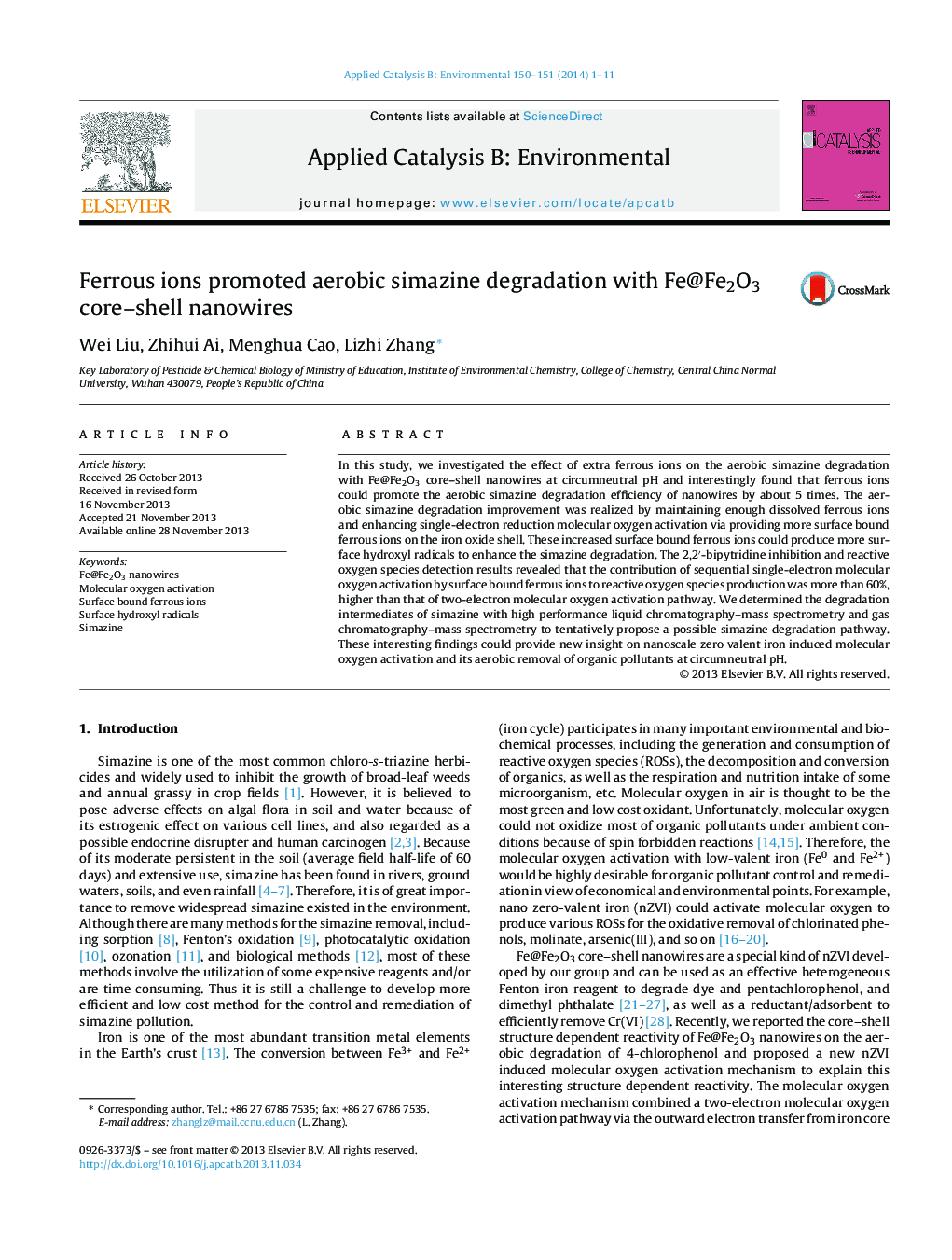| Article ID | Journal | Published Year | Pages | File Type |
|---|---|---|---|---|
| 45903 | Applied Catalysis B: Environmental | 2014 | 11 Pages |
•Ferrous ions could promote the aerobic simazine removal of Fe@Fe2O3 core–shell nanowires.•More surface bound ferrous ions could produce more surface hydroxyl radicals.•Single-electron molecular oxygen activation contributes to more than 60% of ROSs production.
In this study, we investigated the effect of extra ferrous ions on the aerobic simazine degradation with Fe@Fe2O3 core–shell nanowires at circumneutral pH and interestingly found that ferrous ions could promote the aerobic simazine degradation efficiency of nanowires by about 5 times. The aerobic simazine degradation improvement was realized by maintaining enough dissolved ferrous ions and enhancing single-electron reduction molecular oxygen activation via providing more surface bound ferrous ions on the iron oxide shell. These increased surface bound ferrous ions could produce more surface hydroxyl radicals to enhance the simazine degradation. The 2,2′-bipytridine inhibition and reactive oxygen species detection results revealed that the contribution of sequential single-electron molecular oxygen activation by surface bound ferrous ions to reactive oxygen species production was more than 60%, higher than that of two-electron molecular oxygen activation pathway. We determined the degradation intermediates of simazine with high performance liquid chromatography–mass spectrometry and gas chromatography–mass spectrometry to tentatively propose a possible simazine degradation pathway. These interesting findings could provide new insight on nanoscale zero valent iron induced molecular oxygen activation and its aerobic removal of organic pollutants at circumneutral pH.
Graphical abstractFigure optionsDownload full-size imageDownload as PowerPoint slide
